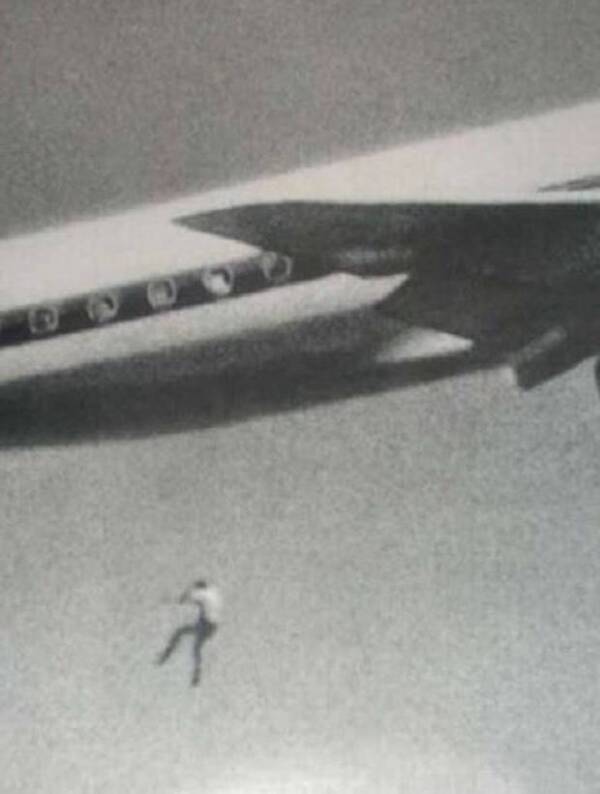
Most teenagers would hate being separated from their families and friends, particularly if they are sent to a Catholic residential school with strict rules that must be followed.
In 1970, Keith Sapsford, a 14-year-old Australian, found himself in just that set of circumstances when his father sent him to a Roman Catholic Institution called Boys’ Town in Sydney. He decided to run away after just a few weeks.
Keith didn’t intend to return home, figuring he would be sent right back. Instead, he decided to head out of Australia altogether. Keith Sapsford got himself to the Sydney airport after leaving his school. Once he arrived at the airport, Keith snuck onto the tarmac where several planes were located.
One plane, whose destination was Tokyo, Japan, became the vehicle for his escape. The open undercarriage of the Japan Air Lines was too tempting to resist, and he climbed inside.
What inspired him to take this desperate step?

The early life of Keith Sapsford
Months before Keith stepped out onto that tarmac, events were put into motion that impacted Keith’s decisions and ultimately led him to climb onto that plane’s wheel well. Charles Sapsford, Keith’s father, had told his son about a Spanish boy who had climbed into the undercarriage of a plane, costing him his life.
Keith’s father had hoped to discourage his adventurous son from taking such a risk, but it may have inspired him to hop on a plane to Japan.
Born in 1956, Keith was a curious kid who always liked to be on the move.
His family had actually just taken a trip overseas to satisfy his adventurous spirit. Unfortunately, he had a habit of running away, and even a long overseas trip was not enough to stop his wanderlust.
But after their return home, Keith Sapsford was restless. His parents decided that some discipline and formalized structure was needed. Boys’ Town, a Roman Catholic educational institution located in the southern portion of Sydney, was seen as the best option for Keith.
This institution specialized in dealing with troubled children, those who were in need of structure and a formal discipline arrangement. His parents felt it would be the right thing to help him get on the best path.
Keith stows away
Unfortunately, the institution underestimated Keith’s adventurous spirit, and he was able to run away just two weeks after his arrival. It is unclear what made him decide to head to the airport or if Keith even knew the plane’s destination when he climbed into the wheel well.
Regulations at major airports were not as strict as the ones we deal with today, so it is not surprising that a teenager was able to sneak onto the tarmac.
Keith saw a plane (Douglas DC-8) preparing for boarding and took the chance. Unlike that Spanish boy, he figured he could survive because Keith would be in the wheel well and could avoid the dangers of high-altitude exposure.
However, what Keith Sapsford did not consider was that the wheel-well compartment would reopen when the plane’s wheels retracted after takeoff. When that happened, Keith fell 200 feet to his death.
His father believes that the evidence suggested that Keith might have also been crushed by the wheels when they attempted to retract. Either way, the result was a family’s tragic loss of life and heartbreak. That heartbreak would live on for over 40 years before his parents passed away.
The U.S. Federal Aviation Authority published research that showed just one in four airplane stowaways survive the flight. Survivors hitch a ride on short trips with low heights, but there are no surviving stowaways on planes that reach cruising altitude.
Statistics show that there have been 96 recorded stowaway attempts between 1947 and 2012 in the wheel-well compartments over the course of 85 flights. Only 23 of them survived. That meant 73 people died attempting to get a free trip.
Ignoring this information and attempting to stow away can be tragic, as the story of Keith Sapsford illustrates.
A Photographer Snaps Heartbreaking Fall
Below on the ground, amateur photographer John Gilpin happened to be at the airport. He was taking pictures of events at the airport, hoping one or two would be of good quality. Although he didn’t know it at the time, John would end up capturing Keith Sapsford as he fell to his death.
Keith had already spent several hours in the wheel well before the plane took off. Later, when experts inspected the aircraft, they found handprints, footprints, and threads from the boy’s clothes. They needed all the evidence to prove that Keith had been on the plane.
Even more tragic, had Keith not fallen out of the plane, he would have likely frozen or suffocated to death. The compartment reached freezing temperatures and was not oxygenated.
Keith Sapsford was only in a short-sleeved shirt and shorts, so he had limited protection from the shift in temperature that would occur as the plane reached its cruising altitude. Even the retracting wheels were a threat because there was limited space for him and the wheels when they returned to their compartment.
But surprisingly enough, John didn’t realize what he had captured on film until nearly a week later. Developing his photographs from the day at the airport, John noticed a print with the silhouette of a boy falling feet-first from the plane. His hands were raised up in the air, appearing to be an attempt to cling onto something and stop his fall.
The photo remains a chilling reminder of how that child lost his life in a desperate attempt to see the world and escape the structure of his school.